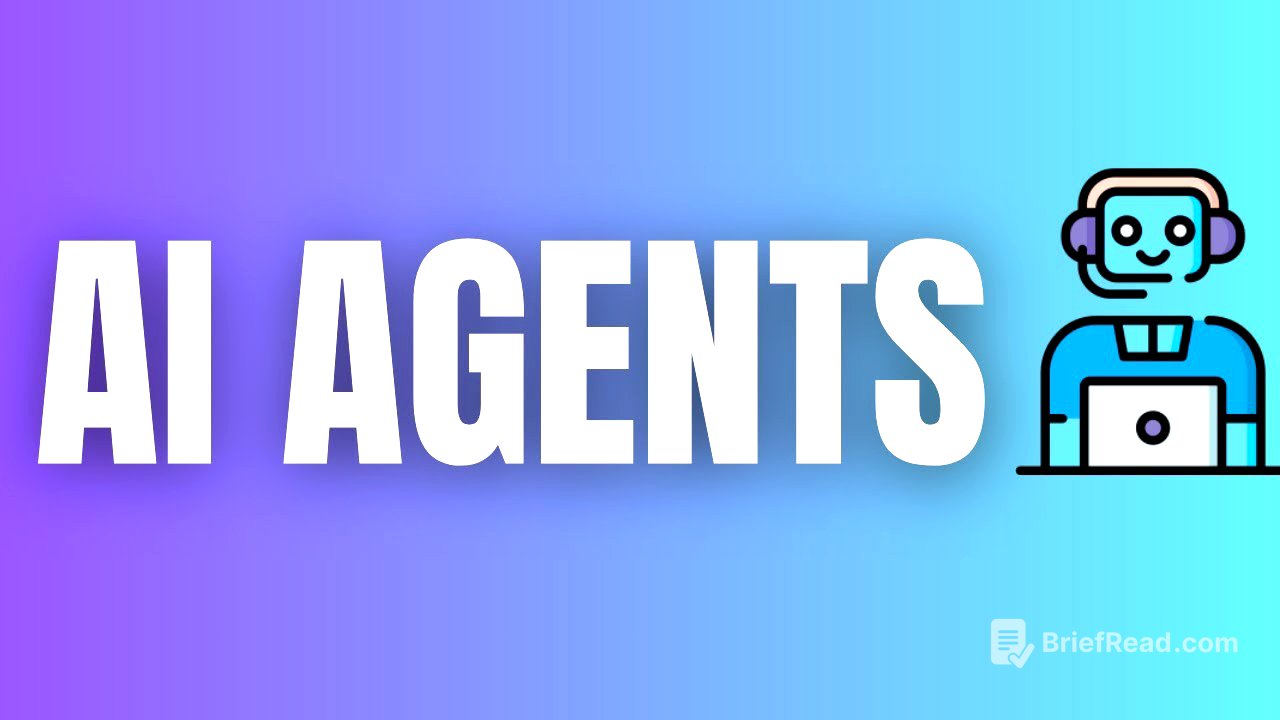TLDR;
This video explains AI agents, highlighting their differences from Large Language Models (LLMs) like ChatGPT. It covers the limitations of LLMs, such as lack of real-time data access, contextual memory, and the ability to perform actions. The video then introduces AI agents as systems that use AI to perform tasks autonomously, overcoming these limitations by integrating with tools, APIs, and real-time data sources. It also discusses the features of AI agents, including autonomy, adaptability, and goal orientation, and provides examples of their applications in customer support and task automation. Finally, the video touches on how AI agents can enhance software testing by automating test case generation, execution, and bug reporting.
- LLMs are limited by static data and lack of real-time interaction.
- AI agents overcome these limitations by integrating with various tools and APIs.
- AI agents enable automation of tasks and real-time data access.
Intro to AI Agents and LLM [0:02]
The video introduces AI agents and their functionality, contrasting them with Large Language Models (LLMs) like ChatGPT, Deepseek, and Google Gemini. While LLMs generate outputs based on prompts, the video aims to explain what AI agents are, how they function, their differences from LLMs, and their specific applications.
Limitations of LLMs [0:42]
LLMs have several limitations, including being trained on data up to a certain point, which restricts their access to real-time or updated information. For instance, ChatGPT, trained on data up to 2021, may not provide accurate information for events after that year. LLMs also lack contextual memory, treating each prompt as an independent query without tracking past interactions. Furthermore, LLMs cannot perform real-time actions, such as interacting with e-commerce websites to search for products, add them to a cart, or process payments. They operate based on static content and cannot connect to databases, APIs, or other resources. LLMs may also produce biased or inaccurate outputs based on their training data and have limited understanding of context compared to humans, generating responses based on patterns rather than actual comprehension.
AI Agents Defined [5:37]
AI agents are programs or systems that use artificial intelligence to perform tasks autonomously, meaning without constant human intervention. Unlike LLMs, AI agents can interact directly with backend systems such as databases, web UIs, and APIs to perform real-time actions. They perceive their environment, make decisions, and take actions to achieve specific goals based on user instructions. AI agents often combine LLMs with other tools, APIs, and decision-making algorithms to enhance their capabilities. They operate in real-time, interacting with web pages, identifying elements, and performing actions according to user interactions, while maintaining an internal environment and history to make informed decisions.
Key Features of AI Agents [9:04]
AI agents have three main features: autonomy, adaptability, and goal orientation. Autonomy means they can operate without constant human intervention, performing actions continuously once instructed. Adaptability allows them to learn and improve over time through interactions, leading to better results. Goal orientation means they are designed to achieve specific objectives, such as a customer support AI agent that answers queries, resolves issues, and escalates problems to human agents if needed. AI agents can also book flight tickets through chat boards by gathering user details and preferences, streamlining the process compared to multiple navigations and workflows.
How AI Agents Work [12:23]
AI agents use Natural Language Processing (NLP) to understand user prompts and generate task lists. They execute these tasks by integrating with various resources such as data documents, code executors, machine learning models, and LLMs. When a user provides a prompt, the AI agent completes the task by utilizing different tools and environments.
AI Agents Overcoming LLM Limitations [13:23]
AI agents overcome the limitations of LLMs by integrating with tools like APIs and databases to perform actions that LLMs cannot. They maintain context across interactions by storing conversation history in external memory systems, enabling real-time data access to fetch live data from the internet or other sources. AI agents also automate tasks by performing automated actions based on instructions, unlike LLMs which only provide text responses. For example, AI agents can send emails, update spreadsheets, and control smart devices, tasks that LLMs cannot perform alone. The integration of LLMs with AI agents has led to the development of codeless automation tools, where tasks can be automated by providing instructions in plain English.
AI Agents in Software Testing [19:17]
In software testing, LLMs can generate test cases, code, and documentation but cannot execute tests on real applications or interact with software systems directly. AI agents, however, can automate the entire testing process, from generating test cases to executing them and reporting bugs. They can interact with software, simulate user actions, and integrate with CI/CD pipelines. For example, an AI agent can automatically test a web application by clicking buttons, filling forms, and validating outputs.
Summary of AI Agent Integration with LLMs [21:09]
AI agents enhance LLMs by enabling them to interact with real-time data sources like databases, APIs, and web applications. While LLMs provide responses based on pre-trained data, AI agents facilitate actions and executions. Codeless automation tools like Test Trigger utilize AI agents to execute test cases written in plain English on real-time browsers, performing web, API, and mobile app testing.









